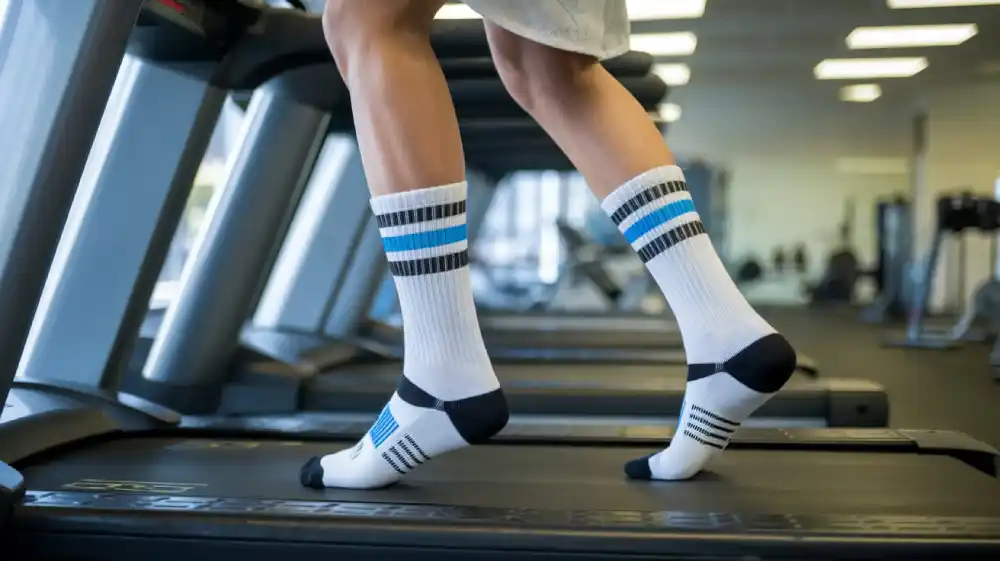
When it comes to running gear, most people focus on shoes, gear, and performance-enhancing accessories, but few consider the socks they wear. The right pair of socks can significantly affect comfort, performance, and injury prevention. From reducing friction that causes blisters to offering targeted support for muscles, running socks are essential. This post will break down the science behind running socks, explore how they enhance the running experience, and discuss how offering high-quality options can help your brand stand out in a competitive market.
What Makes Running Socks Different from Regular Socks?
While socks may seem like a simple accessory, running socks are designed with far more precision than regular ones. The key differences lie in the materials, structure, and performance-focused features crafted specifically for the demands of running.
Running socks are made from advanced materials like moisture-wicking synthetics or Merino wool. These fabrics are engineered to keep your feet dry by pulling sweat away from the skin, a stark contrast to cotton socks, which absorb moisture and stay damp. This moisture control not only boosts comfort but also significantly reduces the risk of blisters and hot spots, common issues when wearing regular socks.
Fit plays a crucial role in performance. Running socks are designed to hug the foot snugly, preventing uncomfortable bunching or slippage inside shoes. They often feature additional padding around high-impact areas like the heel, arch, and toes, providing extra comfort where it’s most needed. This design helps minimize discomfort and prevent injuries during long runs.
The construction of running socks goes beyond fit and comfort—they’re built to enhance performance. Many include targeted compression, which supports circulation, reduces swelling, and combats muscle fatigue. With a design that aligns with the natural movements of the foot, running socks are far superior to regular socks in supporting long-distance runs and ensuring a smoother, more comfortable experience.
Furthermore, many running socks include targeted compression to improve circulation, reduce swelling, and combat muscle fatigue. This enhances both short-term performance and long-term recovery, offering a significant advantage over regular socks.
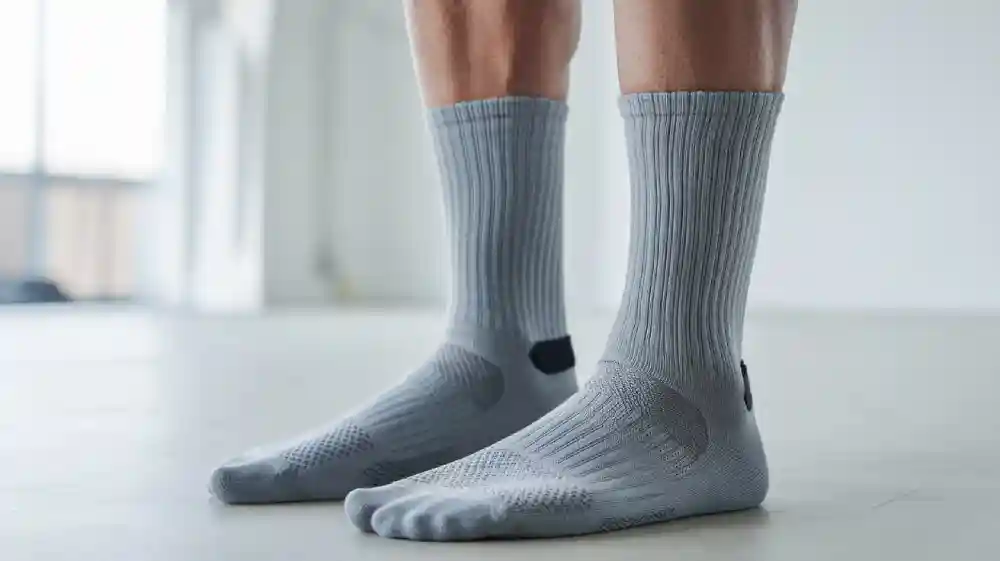
How Running Socks Improve Performance?
Running socks are specifically designed to elevate your running experience in ways regular socks cannot. From preventing blisters to enhancing comfort during long-distance runs, these specialized socks are crafted with performance in mind.
One of the most important benefits of running socks is their ability to reduce friction. Blisters are one of the most common issues runners face, and friction is usually the cause. Unlike regular socks, running socks feature seamless designs and extra padding in high-impact areas to minimize rubbing. This thoughtful construction significantly reduces the risk of blisters, allowing you to focus on your stride instead of foot discomfort.
Comfort is another key element, especially for long-distance runners. These socks are equipped with additional cushioning that absorbs shock with each step, providing a softer feel throughout your run. Their snug fit also prevents any bunching or shifting inside your shoes, keeping your feet secure and free from irritation—even after miles of running.
Moisture-wicking technology is another feature that makes running socks stand out. These socks pull sweat away from the skin, helping to keep your feet dry. By promoting breathability, they maintain a cool temperature during intense runs and prevent the buildup of moisture, which could otherwise lead to blisters and discomfort.
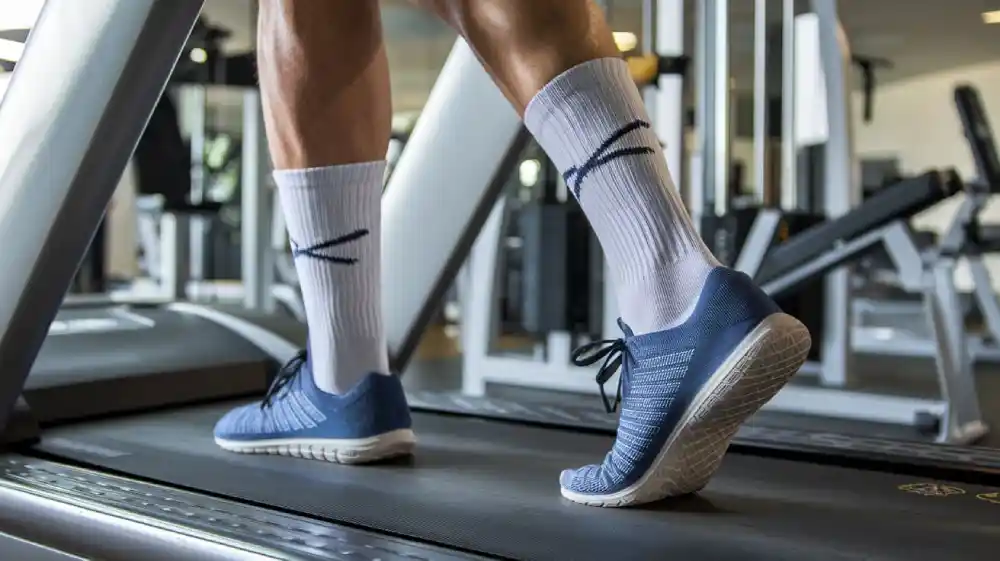
Common Problems Solved by Running Socks
Running often leads to foot discomfort and injuries, but specialized socks are designed to address many of these issues, providing significant improvements in both comfort and performance.
Blisters, chafing, and general discomfort are common problems faced by runners. Regular socks can cause friction, leading to painful blisters and skin irritation. Running socks, however, are engineered with seamless designs and additional padding in key areas to reduce friction and prevent hotspots. This thoughtful construction ensures that your feet stay protected, allowing you to focus on your run without worrying about discomfort.
Foot fatigue and poor circulation are also major concerns, especially during long-distance runs. Running socks with built-in compression help boost circulation in the feet and lower legs, reducing swelling and fatigue. By improving blood flow, these socks help you maintain energy and recover more quickly. The targeted compression around the arch and ankle also reduces muscle strain, enabling you to keep up your pace with less effort.
Heel and arch support are crucial for preventing injuries and maintaining proper alignment. Many running socks feature extra cushioning and reinforced areas around the heel and arch, providing added stability. This support helps to reduce pressure on sensitive areas, preventing common foot issues like plantar fasciitis or heel pain. By improving foot alignment and offering better shock absorption, these socks contribute to a more comfortable and injury-free run.
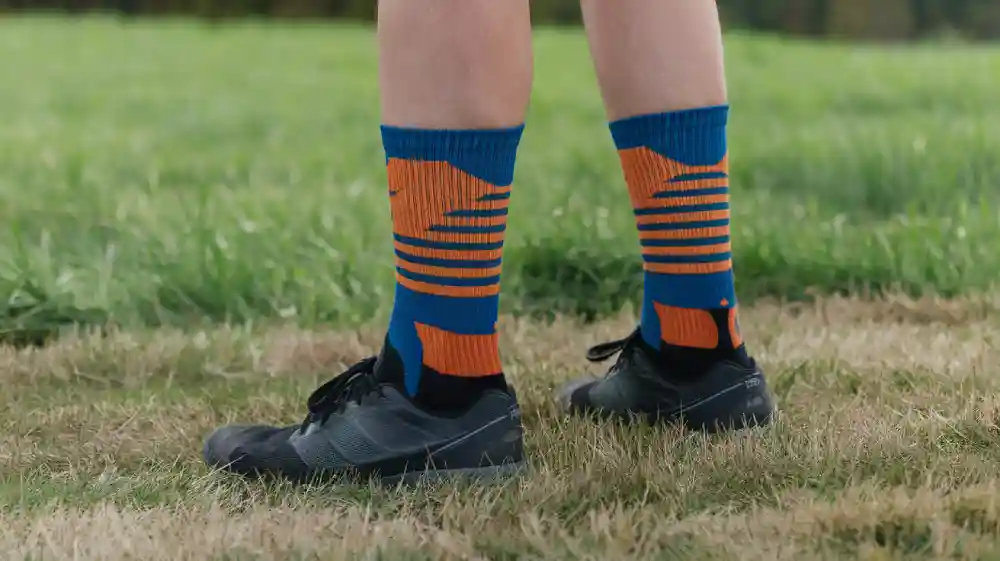
Choosing the Right Running Socks: Key Factors for Athletes
Choosing the right pair of running socks is essential for improving comfort, performance, and injury prevention. Athletes need to consider several key factors, including size, compression, cushioning, and material. Each of these elements contributes to creating a sock that enhances the running experience and supports the feet during intense activity.
The size of your socks is the foundation of comfort. A sock that’s too tight can restrict blood flow, while one that’s too loose can slip inside your shoe, causing friction and blisters. The ideal fit should be snug but not constricting, providing support around the arch and ankle without feeling restrictive. A proper fit is crucial for long-distance runs, as it prevents discomfort and foot problems that arise from ill-fitting socks.
Compression is a feature that enhances circulation and reduces muscle fatigue. Running socks with compression support the feet and lower legs, promoting better blood flow. This is especially beneficial for runners who engage in long-distance or intense training sessions, as compression helps reduce swelling and accelerates recovery. Depending on the level of intensity, runners can choose socks with light compression for added comfort or firmer compression for muscle stabilization and quicker recovery.
Cushioning in running socks helps to absorb the shock of each step, reducing the impact on the feet and joints. Extra padding around areas like the heel, arch, and toe provides additional protection, which is especially important for longer runs. However, too much cushioning can make the socks feel bulky, reducing flexibility and comfort. The key is to find the right amount of padding that supports the feet without compromising movement.
The material of running socks plays a significant role in both comfort and performance. Merino wool is a popular option for its natural moisture-wicking properties and temperature regulation, keeping feet dry and comfortable in varying weather conditions. Synthetic blends like nylon and polyester are lightweight and durable, offering excellent moisture management for high-intensity activity. Many running socks combine these materials to optimize both performance and comfort, providing the best of both worlds.
Finally, the type of running you do should influence your sock choice. For trail runners, socks need to be durable and protective, often with extra reinforcement and cushioning to handle rough terrain. Marathon runners, on the other hand, benefit from socks that focus on moisture-wicking, breathability, and minimizing friction for long-distance comfort. Casual runners can opt for socks with moderate cushioning and light compression, offering a supportive, comfortable fit for shorter runs.
The Business Case for Running Socks: Why Retailers Should Care
As the fitness market continues to grow, running socks have become a crucial product category for retailers to consider. With more consumers prioritizing specialized gear to boost their athletic performance, offering high-quality socks presents a unique opportunity to cater to a rising demand and stay competitive in the market.
The shift towards performance-focused products is driven by a surge in running, marathons, and overall fitness activities. Consumers are increasingly seeking socks that provide not only comfort and durability but also features like moisture-wicking, cushioning, and targeted support. Retailers who offer these specialized products stand to attract a loyal customer base of both casual and serious athletes, fulfilling the demand for better performance gear that goes beyond basic socks.
In addition to meeting consumer demand, running socks present a chance for retailers to achieve higher profit margins. Products with advanced features, such as enhanced cushioning or compression, are sold at a premium price, offering retailers an opportunity to position themselves within the high-end segment of the running gear market. This results in increased profitability, especially when compared to standard socks.
Customization also plays a significant role in the running sock market. Retailers can differentiate themselves by offering personalized designs, such as custom colors, logos, and features tailored to specific customer needs. These socks can also appeal to sports teams, fitness clubs, and corporate clients, opening doors for bulk orders and establishing long-term business relationships.


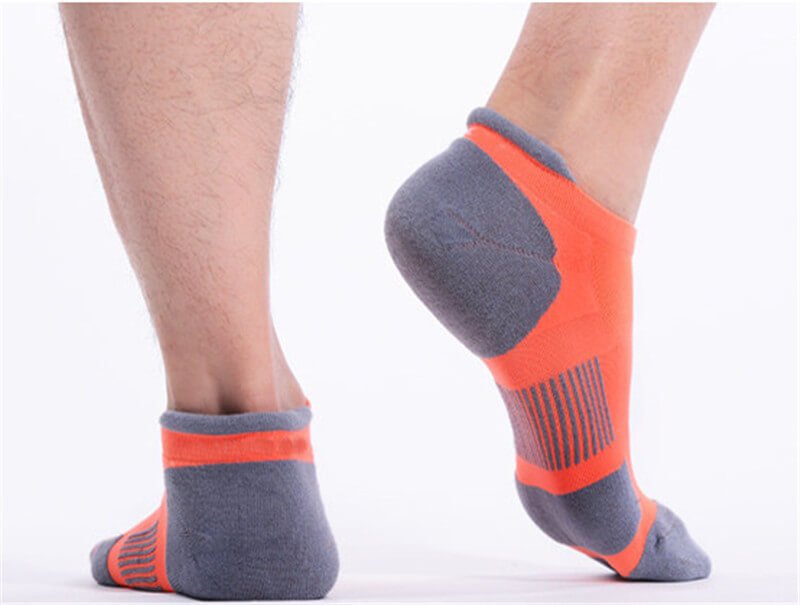
How Custom Running Socks Can Set Your Brand Apart?
Custom socks provide an excellent opportunity to elevate your brand and address the specific needs of your target market. Our tailored solutions are designed to align with your brand’s identity while meeting the unique demands of various industries, such as healthcare, sports, and maternity. Each sector requires distinct features: medical compression socks focus on therapeutic needs, sports socks enhance performance, and maternity socks prioritize comfort and slip resistance.
We offer a full range of customization services, covering every detail from material selection to design. You can choose from premium options like organic cotton, Alpaca, wool, merino wool, and recycled materials, ensuring your product is both functional and stylish. Our team also provides professional mockups, enabling you to preview the final product before mass production to ensure it meets your brand’s vision.
In addition to sock design, we offer customized packaging solutions that reflect your brand’s personality, enhancing consumer appeal and product differentiation. We also manage global logistics and after-sales support to ensure timely and smooth delivery, regardless of your location, streamlining your supply chain so you can focus on growing your brand.
For those offering compression socks, we provide compression testing services using Swiss-imported equipment, ensuring that the product meets the required specifications and building customer trust. Additionally, our photography service delivers high-quality images for e-commerce and marketing, saving you time and resources on content creation.
Lastly, our consultation service offers expert advice on selecting the right materials, designs, and packaging to suit your target audience. We also guide you on incorporating eco-friendly materials into your products, enhancing your brand’s sustainability and appeal to environmentally conscious consumers.
How to Partner with Sock Manufacturer?
Partnering with the right manufacturer is essential for creating high-quality, custom socks that represent your brand and meet consumer demands. Understanding the production process and knowing how to collaborate effectively with manufacturers ensures that your product meets expectations and arrives on time.
The production journey begins with design and material selection. It’s important to communicate your vision clearly, whether that’s specific features like moisture-wicking, cushioning, or compression, or custom branding like logos and colors. Once the design is finalized, manufacturers will create samples to evaluate the look, fit, and feel of the product. After testing and tweaking the samples, mass production can begin, with quality checks along the way to ensure consistency. From the first sketch to the finished product, maintaining open communication with your factory ensures the end product matches your requirements, and any adjustments can be made in the sampling phase.
When selecting a manufacturer, there are several key factors to consider. First, assess their expertise in producing performance-focused socks. A manufacturer with experience in creating socks designed for active use will have the necessary knowledge to handle advanced materials and production techniques. Ensure they can handle your required volume, as well as your timeline, especially if you’re looking to scale your product line. Their capacity to meet deadlines and their reputation for consistency and quality control should be top priorities. It’s also wise to review their customer service practices—prompt, transparent communication throughout the production process is essential for minimizing errors and delays.
Collaboration is crucial when it comes to getting the best customization for your brand. Many factories offer a range of options for tailoring socks to your specifications, including adding logos, changing colors, or using different materials. Be as specific as possible about your design vision, whether you want to incorporate unique patterns, custom fits, or eco-friendly materials. Some manufacturers may provide design assistance, while others may require detailed specifications from you. Either way, maintaining a clear dialogue ensures that the final product is a true reflection of your brand’s identity.
Conclusion
In summary, running socks do make a difference—offering not only improved comfort and performance but also helping to prevent injuries and enhance overall running experience. With features like moisture-wicking, cushioning, and compression, these socks are a must-have for athletes seeking to perform at their best. By investing in quality socks and offering customization options, you can elevate your brand’s appeal and meet the growing demand for specialized running gear.
FAQ
How do I choose the right running socks for different types of runners?
The right pair of socks depends on the type of running. For long-distance runners, look for moisture-wicking and cushioning socks that minimize friction. Trail runners should choose socks with added durability and padding to handle rough terrain. Casual runners may prefer socks with moderate cushioning and support for shorter runs or everyday training.
How often should I replace my running socks?
Running socks should be replaced every 6 to 12 months, depending on how frequently you use them and the level of wear and tear. If the socks lose their elasticity, cushioning, or moisture-wicking properties, it’s time for a new pair to ensure optimal performance and comfort.
Can running socks be worn in all weather conditions?
Yes, running socks are available for all weather conditions. For warmer weather, look for socks made of breathable, lightweight materials that offer moisture-wicking and ventilation. In colder weather, opt for socks made with thicker materials like Merino wool to provide insulation and moisture management, keeping your feet warm and dry.
Are running socks suitable for other sports or activities?
Yes, running socks are versatile and can be used for other high-impact activities like hiking, cycling, or even gym workouts. Their moisture-wicking, cushioning, and compression features make them great for any activity that involves long periods of movement and foot strain.
What should I look for in a running sock for marathon training?
For marathon training, prioritize socks with cushioning, moisture-wicking, and anti-blister features. Look for socks that provide extra padding around the heel and toe areas to reduce impact. A snug fit with moderate compression can also improve circulation and reduce fatigue during long runs.
